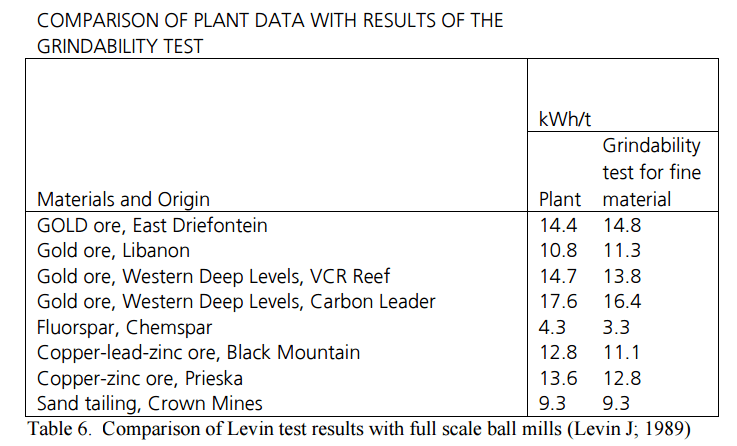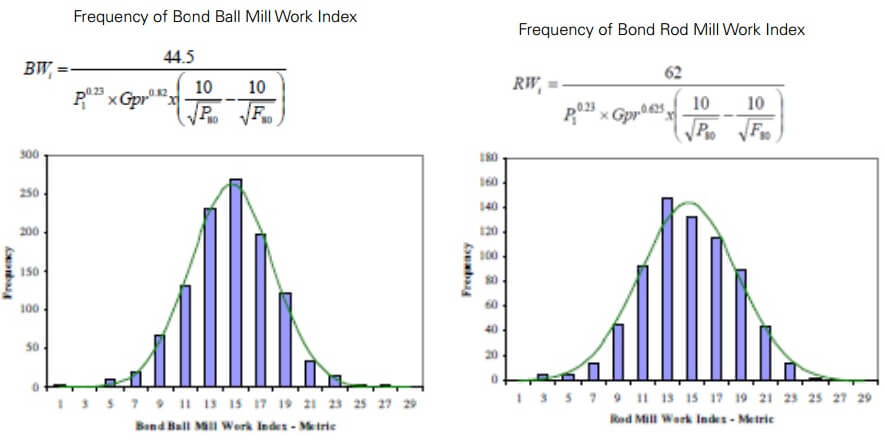The Ball Mill Grindability of ores is generally determined by the Bond standard grindability index test method. However, this test and procedure is not applicable to fine materials such as sands; the grindability of fine materials must therefore be determined by a comparative grinding method, for which a reference material of know grindability is required. Suitable reference materials are not easily obtained, and a grindability that does not depend on reference materials is needed. The report I herein attach (” Levin ” Grind Test) proposes such a test and records the results of some tests on the validity of this method to measure grindability.
The proposed grindability test uses a Bond standard test mill and a quantity called the “equivalent energy per minute”, which is the energy per minute that would be used by the mill if it were scaled up to a wet-grinding industrial mill of 8″ diameter. The value of this quantity, denoted the E, was calculated from the results of Bond standard grindability tests on various materials, and an average value of 1425 x 10 e-6 kW h /min was determined. It is suggested that values far removed from this figure indicate that the ores concerned do not conform to the Bond Law of Comminution.
Here is the paper and procedure using the ” Levin ” method. Talk about regrinding.
Grindability Index Test Method & Procedure

The Levin test appears to be underused for sizing regrind ball mills. Examples of the results are shown in Table 6. The requirement of 20-30 kg may be a prohibitive factor. The Levin test is a modified Bond Ball test, but makes use of finer screen sizes, and finer feed sizing. In the Levin test the lab ball mill is run at varying lengths of time (energy). At the end of each interval the entire mill contents are emptied and screened at that intervals size. Any undersize is replaced with new top size to maintain a constant volume. This is completed from 75, 53, 45 and 38 microns. With 4 tests each requiring about 2 liters of material this could result in a requirement for more material than is possible to produce in a small pilot plant run given that it will likely be a rougher concentrate. However, if the material mass is possible it would appear that the test will give more accurate results than many of the alternatives.

